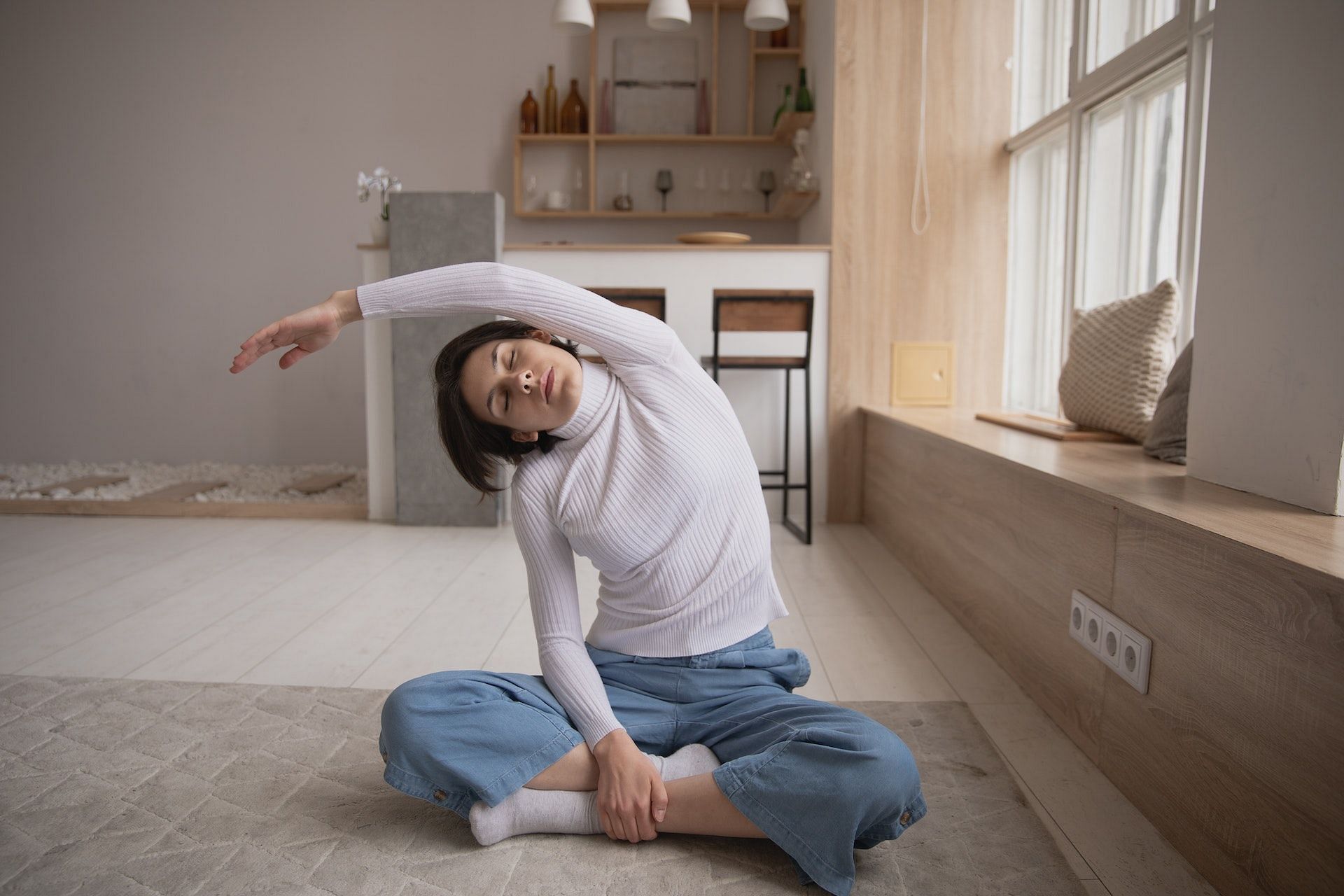
The anterior pelvic tilt is basically when your pelvis gets rotated forward, forcing your spine to curve. It is a change in posture that occurs when the front (anterior) part of the pelvis rotates forward while the back part rises.
The anterior pelvic tilt is often caused due to prolonged periods of sitting and lack of stretching and exercise. If not treated at the right time, it affects the posture and leads to other symptoms as well, including lower back, hip, knee pain, and forced knee rotations.
If you have anterior pelvic tilt, you might notice that your thighs and the anterior part of your pelvis are stiff while the muscles in the back of your pelvis are weak and less flexible. It can also cause your abdominal muscles and glutes to become tight and painful.
Table of Contents
Anterior Pelvic Tilt Symptoms
Often, people with anterior pelvic tilt don’t experience any particular symptoms, but they might possibly notice these problems:
- weak glutes
- tight thigh muscles
- poor posture
- lower back pain
- lower spine curving in
- pain in the knee and hips
The good news is that several anterior pelvic tilt exercises and stretches can help you manage your condition by bringing your pelvis to its neutral and pain-free position.
How to Fix an Anterior Pelvic Tilt?
Fix anterior pelvic tilt problems with the following exercises:
1. Pelvic Tilt
This anterior pelvic tilt exercise is one of the best and easiest ones to strengthen the pelvis and abdominal muscles.
To do the pelvic tilt:
- Lie straight on the floor with your face up and knees bent
- With your back flat on the floor, squeeze your stomach muscles while bending your pelvis slightly upward
- Hold the position for a few seconds and then return to the starting position
- Complete a few reps
2. Squats
Squats are compound exercises that work wonders on the anterior pelvic tilt. It strengthens the hamstring, buttocks, glutes, and other major lower body muscles.
To do squats:
- Stand straight with your feet wider than hip distance, and turn your toes slightly outward
- Tighten your abs and keep your back flat as you bend your knees, and push your hips back to get into a squat
- Slowly stand back up, and repeat the exercise
3. Bridge
This is another great exercise that’s sure to loosen and strengthen your glutes and hamstrings while easing lower back pain as well.
To do the bridge:
- Lie on your back with your feet on the floor at a hip-width distance and knees bent, and place your arms on the side
- Now push your heels into the ground and lift your buttocks off the floor until your thighs and upper body forms a straight line
- Hold the position for 5 seconds and then slowly lower your buttocks down. Repeat.
4. Half-Kneeling Hip Flexor Stretch
This exercise helps loosen tight hip flexor muscles and enhances hip flexibility as well.
To do the half-kneeling hip flexor stretch:
- Stand straight and then step your right leg out in front of you
- Lower into a lunge until your knee nearly touches the floor
- Ensure that your right leg is at a 90-degree angle at your knee
- Now tighten your abs and glues to move your pelvis forward and lean slightly forward from your left leg until you feel a stretch in your inner thigh and hip flexor muscles of your left leg
- Hold for 10 seconds and then relax
- Switch legs and repeat
5. Plank
Regular practice of the plank helps strengthen the abdominal muscles and back and counteracts the negative effects of sitting as well.
To do the plank:
- Lie with your face down and place your hands on the mat with your palms on the floor
- Ensure that your hands are directly under your shoulders
- Extend your legs and keep your body stable
- Now slowly lift your thighs and upper body off the floor and get into a push-up position, and keep your abs engaged throughout the exercise
- Hold the position for as long as you can
Try the aforementioned anterior pelvic tilt exercises a few times a week to see the best results. However, if you don’t notice any progress and your pain persists, consider consulting a healthcare provider for further guidance and medical supervision.
Also, if you have an ongoing health condition such as sciatica, numbness, weakness, tingling sensation or severe pain, talk to a doctor before attempting these exercises.
#Anterior #Pelvic #Tilt #Fix








